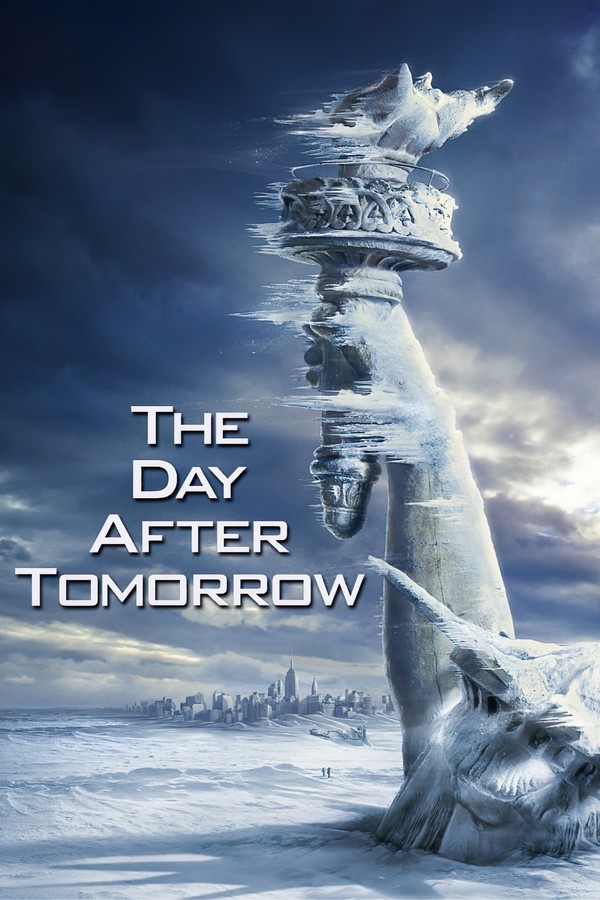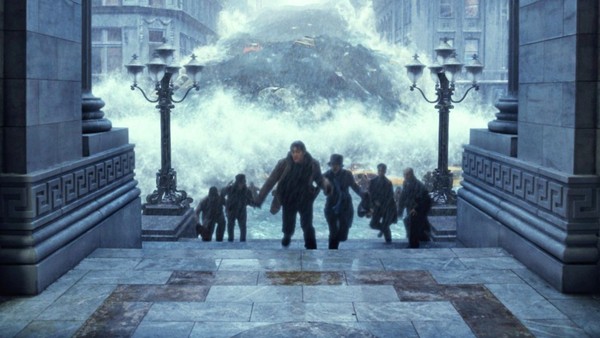This past summer, we experienced a disaster situation caused by a serious climate abnormality. The heavy rain caused many people to die or get injured, and buildings and various public facilities were submerged. In this way, natural disasters caused by climate change can take away all of us. Everyone is aware of the dangers of the global climate environment, but the efforts and changes to prevent it seem to be not being carried out much at home and abroad. Still, the Earth has not undergone any noticeable positive changes, and humans have to be more alert and act more quickly.

Book
"The species of humans has destroyed the environment and put the Earth in an uninhabitable danger."
-Dirk Rossmann
<The Octopus's Ninth Leg (2022)>
In May 2100, the 105-year-old scientist Maximilian is very healthy for his age. Today, he has decided to use what happened 75 years ago, the day he met with six scientific colleagues in Paris, as the topic of conversation. Maximilian is also the only member to have actually experienced 2025. In 2025, when the Earth was in crisis, China, Russia, and the U.S. — the G3 countries — joined forces to protect the Earth, announcing a strong rule of control around the world. However, the rules they set were to change human daily lives, such as reducing meat consumption and limiting driving distance. More and more countries rejected it, including Brazil, and forces trying to profit from the fight between the United States, China, and Russia supported Brazil with powerful weapons. In this way, serious conflicts among underground insurgents began. How will our descendants look back at us during this climate crisis? Or will there be no one to look back at us?
Recommendation
<The Octopus's Ninth Leg> has the characteristics of a science fiction novel, and its content consists of two scenarios. It deals with events on Earth between 2022 and 2025, while also describing a gathering of a group of scholars in 2100 at the house of environmental designer Michelle, in downtown Paris, from where Notre Dame Cathedral is visible. The scholars recall the crisis on Earth more than 80 years ago and experiment with the possibility of combining an octopus with AI. In this way, the story intersects with a composition that transcends time and space, hinting at the present in the climate crisis and the disastrous future that can result from it. Events such as India's Great Flood due to global warming, huge wildfires in Siberia, and nomadic issues in the Yamal Nenets Autonomous Region are issues people actually encounter through the media. Due to rising sea levels, islands in the South Pacific are on the verge of sinking into the sea, tropical fish that have never been seen before are easily caught off the coast of Korea, and reindeer populations are plummeting in Finland. To understand this problem, the author features real-life figures in the United States, France, Russia, China, Nigeria, Saudi Arabia, India, and Brazil and gives them voices. Also, it vividly depicts a time when the future of mankind is in crisis, allowing readers to feel a sense of reality and excitement. The author's conclusion to the prevention of global warming is, "We must change." He emphasizes that the great powers must form an environmental alliance and work on carbon neutrality for the survival of the Earth. Like octopuses' legs that help each other.

Movie
"Get worse."
-Jack Hall
<The Day After Tomorrow (2004)>
While exploring the glacial core in Antarctica, meteorologist Dr. Jack Hall notices an unusual change in the Earth. Soon after, he presents a study on global temperature decline at an international conference. He warns people that rapid global warming will cause glaciers in the Antarctic and Arctic to melt and change the flow of currents as the sea cools, resulting in a huge disaster that will eventually cover the entire planet with glaciers. But the only response he gets is derision, disregard, and arguments with his boss, which leaves Jack forgetting to take his son, Sam, to New York to participate in an academic decathlon. Soon after, the plane with his son experiences abnormal turbulence, while abnormal weather symptoms appear first in Japan and then across the globe, with damage from hail reported on TV. Jack hears that the temperature of the ocean has dropped by 13 degrees and is terrified that the ice age he predicted is rapidly approaching. Jack receives a call from the White House as he tries to save his son from the disaster ahead. He is again at odds with officials in a briefing, arguing that they must first give up and move people as far south as possible below the Mexican border for the survival of mankind. Unfortunately, it is too late for people in the northern part of the world to move while the people who have already started the move are in chaos. Despite that, Jack heads to New York, where his son is. What will happen to Jack's fate, as he goes toward danger to save his son while also offering a way to save mankind? Also, will mankind be able to overcome the Earth's catastrophe?

Recommendation
<The Day After Tomorrow>, a disaster film about the advent of a new ice age on Earth, is directed by Roland Emmerich and is said to have been motivated by author Whitley Strieber's "The Coming Global Superstorm." This hypothetical story shows that the melting of glaciers in the Antarctic and Arctic due to rapid global warming significantly lowers the temperature of currents that move warm air toward the equator, resulting in massive weather changes and most of the northern hemisphere becoming covered by glaciers. Like the movie's title, <The Day After Tomorrow>, it does not happen immediately, but it raises realistic fears that it may suddenly come one day. Considering the climate problems that have changed in our country alone, it really may not be so far in front of mankind. Even though it is a movie that is more than 15 years old, it contains a deep and meaningful message rather than feeling unrealistic. The film also features the president dying and the vice president fleeing to Mexico. This is interpreted as the director's deliberate criticism of the Bush administration for refusing to ratify the Kyoto Protocol, which regulates greenhouse gas emissions. Now that environmental problems are becoming more serious, it is a film that can once again alert mankind, who feel a new season that is becoming unfamiliar every year.


